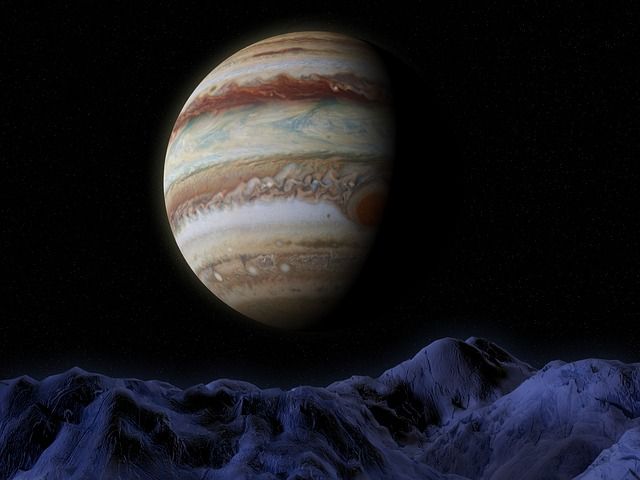Strongest Possibility Yet for Life on Jupiter’s Moon Europa
by Paul Seaburn December 7, 2017 (mysteriousuniverse.org)
• A recent discovery of tectonic activity on Jupiter’s moon, Europa, has Brown University assistant professor, Brandon Johnson, imagining whether this could stir up the pot enough to cultivate a life form or two there.
• Where the Earth’s tectonic plate shift around, or “subduct”, due to the molten mantle pushing upwards, it is speculated that the changes in permeation of salt in the waters and ice of Europa may cause ice sheets to subduct. And with this subduction, nutrients at the surface could be shoved down to provide nourishment for creatures under the moon’s oceans.
• Says Johnson, “Our work… implies that the plates will sink all the way to Europa’s subsurface ocean. This is important because material from the surface of Europa could act as food for life that may exist in Europa’s ocean.”
It’s a term that’s used too frequently and too lightly, but in this case it seems more than appropriate: “This could change everything.” ‘This’ is the discovery of tectonic plate movement on Jupiter’s moon, Europa. Those plates rubbing together under the moon’s frozen surface could move nutrients from the ice to the ocean believed to be beneath it, providing food to any life forms floating around down there. If life can exist deep underneath Antarctica, why not on Europa?
How do you get from plates moving to life existing? Good question. It starts at Brown University in Rhode Island where Brandon Johnson, an assistant professor in the Department of Earth, Environmental and Planetary Sciences, was trying to figure out how tectonic plates could move without heat. That’s the key ingredient here on Earth where the cold dense plates slide underneath each other into the underlying hot mantle in a process known as subduction. Subduction zones on Earth have high rates of earthquakes and volcanoes that are both products and propagators of the process. The energy it created and released may have caused the chemical reactions that sparked life as well as the movements that stirred the waters and fed it nutrients.
But how can this work on frozen celestial bodies with no hot mantle? Johnson and his colleagues did what scientists do … created a model to figure out what would make ice plates move in the same way as rock plates. The simulations found that the secret ingredient was … pixie dust! Just kidding … it was salt. As salt melts it, an ice plate becomes less dense, causing it to rise so that a colder, more dense ice plate can slide under it. It then hits the warmer liquid in the ocean underneath the surface, melts to be come less dense and rises up again, causing further subduction.
FAIR USE NOTICE: This page contains copyrighted material the use of which has not been specifically authorized by the copyright owner. ExoNews.org distributes this material for the purpose of news reporting, educational research, comment and criticism, constituting Fair Use under 17 U.S.C § 107. Please contact the Editor at ExoNews with any copyright issue.
